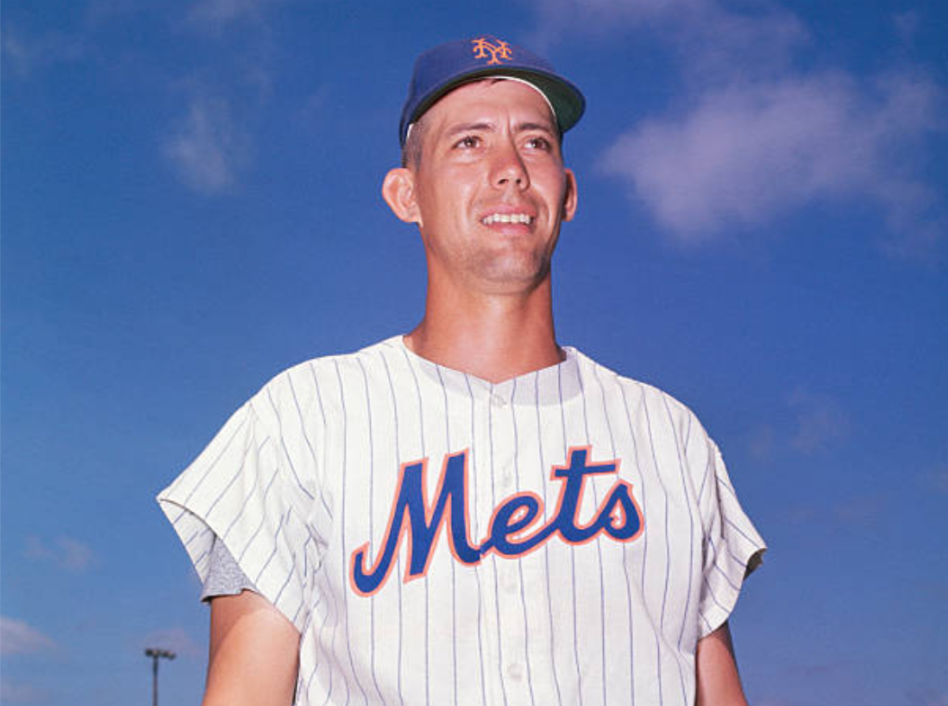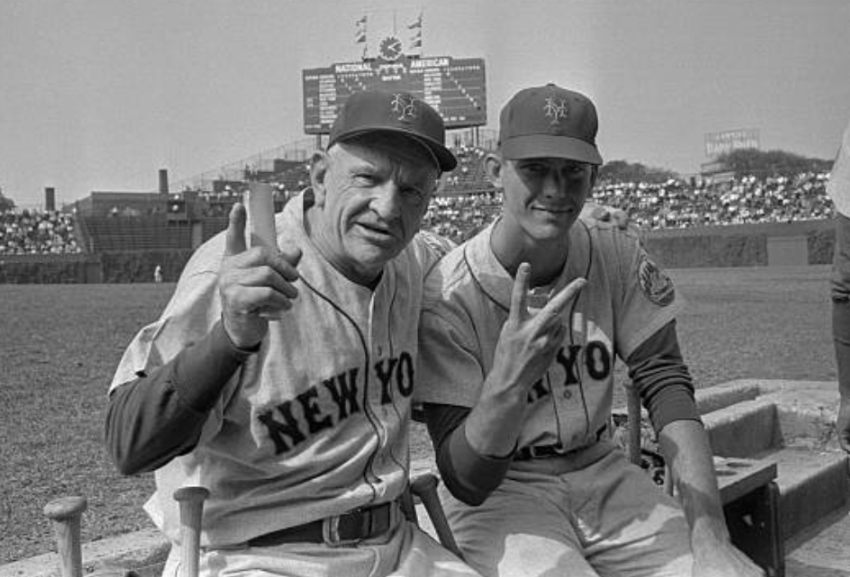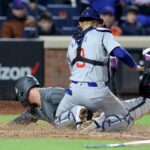
If Marv Throneberry symbolized the bumbling incompetence of the early New York Mets, Rod Kanehl the everyman quality, Ed Kranepool the hope for the future, and Roger Craig the frustration, nobody symbolized all of these qualities wrapped into one player the way Jim Hickman did.
I always considered Al Jackson the Mets’ best expansion draft choice, but Jim Hickman was probably second. The tall, rangy outfielder was basically the Mets’ regular center fielder for their first four seasons, although it seemed like the organization was always trying to replace him.
Hickman would show some flashes of his potential when he was with the Mets. He was the first Met to homer three times in a game, and was the first Met to hit for the cycle. At the time, it was only the 9th “natural” cycle in MLB history, hitting a single, double, triple, and finally a home run in succession, on August 7, 1963.
Hickman was also the guy who homered to end Roger Craig’s ridiculously long losing streak – and he hit the last home run at the Polo Grounds in the final game ever played there.
And sadly, despite all that, Jim was a target of boo-birds for his frequent strikeouts and double play grounders in clutch situations.

Defensively and on the bases, Jim was okay, but his long strides and gangly build somehow made it seem like he wasn’t trying because it looked like he should have been better.
When the Mets finally parted ways with Hickman as the throw-in sent to the Dodgers along with Ron Hunt in the Tommy Davis trade, most Mets fans either didn’t care or said “good riddance” and his performance with the Dodgers, a .163 batting average in his only season in L.A. seemed to confirm what some Mets’ fans thought all along – that this guy was no major league player.
Yet, incredibly, and seemingly from out of nowhere, in 1970, Hickman then with the Chicago Cubs produced a remarkable season. He batted .315 that season, with 33 doubles, 32 home runs, 93 walks, 115 RBIs and a 1.001 OPS.
Hickman earned a spot in the All-Star Game where he drove in the winning run in one of the most memorable and yet infamous moments in the history of the Mid-Summer Classic. That was the play when Pete Rose violently collided with catcher Ray Fosse in the final play of the game. Fosse suffered a fractured and separated shoulder that never healed properly.
Gentleman Jim, as he was called, finished eighth in the NL MVP voting that season, and suddenly he was among the most feared hitters in the league. Who was this guy ?
The following year, he hit just .256 and his RBIs were down to 60, more typical of the kind of seasons he had with the Mets, and before long, he was gone from the major league scene.
But if ever a mediocre player had one shining year, living up to the potential that Mets’ fans once hoped he had, though most eventually abandoned that idea, Hickman was the one. In retrospect, his 1970 season is still a little hard to believe.
The last of the Original 1962 Mets when he was traded, Hickman hit .241 with 60 home runs and 210 RBIs in his five seasons with the Amazins. Sadly, Jim Hickman passed away on June 25, 2016 at the age of 79. An under-appreciated Met to be sure, who has been remembered more fondly as time moved on.
















